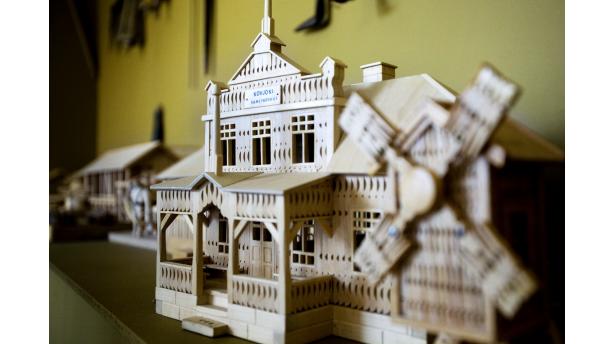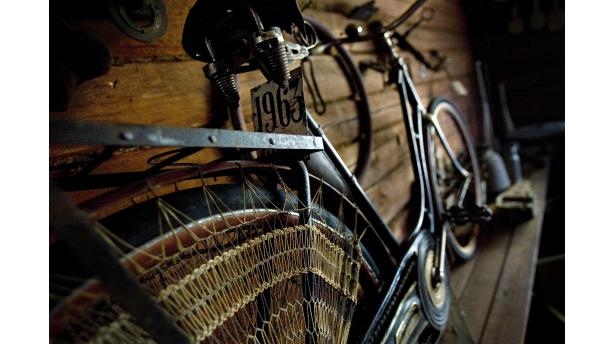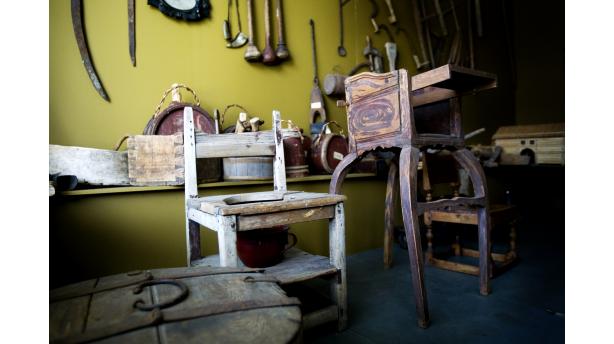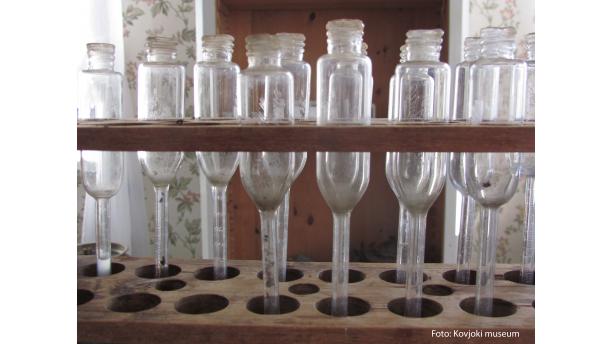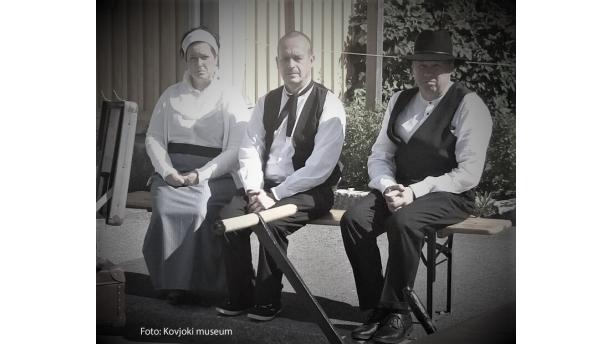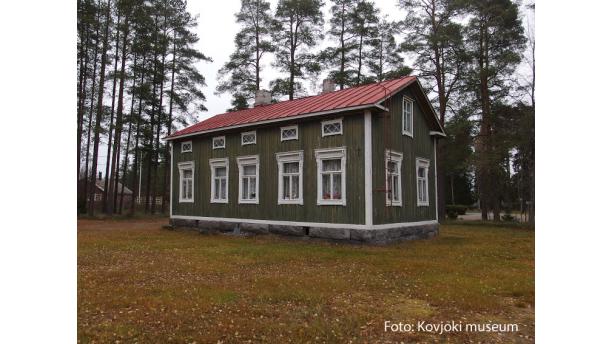Museum A-Ö » Kovjoki Museum
Kovjoki Museum






Did you know...
One of the rarities of the museum is a homemade tractor.
The Kovjoki Museum displays old time peasant life with the help of various instruments, tools and everyday objects, such as tableware, children’s chairs and dough troughs. Get a glimpse of the Kovjoki of past decades through scale models of the old and demolished houses or through newspaper clippings and photographs.
The Kovjoki Museum situated near old railwaystation is on display a vast collection of agricultural tools. The regional society was established in 1978, when the village school was threatened by demolition. It raised the need to protect the old cultural heritage of the region. The society founded a museum and acquired an old co-operative shop in the village. The museum has gained most of its items as donations from the locals, but some of the objects have been given for preservation for an indefinite time. On display from the old village school is a woodturning lathe equipped with a foot pedal.The bicycle, that used to belong to Dr. Elisabeth Backman, the Nykarleby civic doctor, is of particular interest. Dr. Backman was one of the first female doctors in Finland, as she accomplished a degree in medicine already in 1903. In addition to an interesting mileage history the bicycle also has a registration plate. During the Russian rule all vehicles, including bicycles, had to be registered. The bicycle dates back to the beginning of the 20th century and it has wooden hoops.
Among the pearls of the museum are the scale models of the oldest buildings in the village built by Alfred Hägg. For instance the Kovjoki saw and mill are made of wood in a detailed way with great accuracy. The newspaper clippings and photographs of Kovjoki in the museum take you to the past close to the big and small events in the district.
Among the oldest items in the museum are the trunk from the year 1798 and the steelyard balance from the year 1751. The majority of the objects date back to the 19th century, but there are also newer items on display, such as the manual washing machine from the 1950s. One of the smallest objects in the museum is the rifle bullet originating from the Oravais battlefield. Other antiquity findings have also been made in Kovjoki. An ancient grave including a Roman coin was discovered in Helgaberg in the 1920s. The original coin is now in the National Museum of Finland in Helsinki.
The baton including bookmarks of families can be of interest to someone interested in family history. The baton is part of the new village order, by which the village elder introduced the new regulations concerning agriculture in 1785.
Kovjoki museum has a permanent exhibition about the poet Joel Rundt, as well as one about the everyday objects of peasant communities. In addition to this, new theme exhibitions are planned every summer, where various events related to the village are highlighted.
Kovjoki has been chosen as the Village of the year 2019 in Ostrobothnia.
